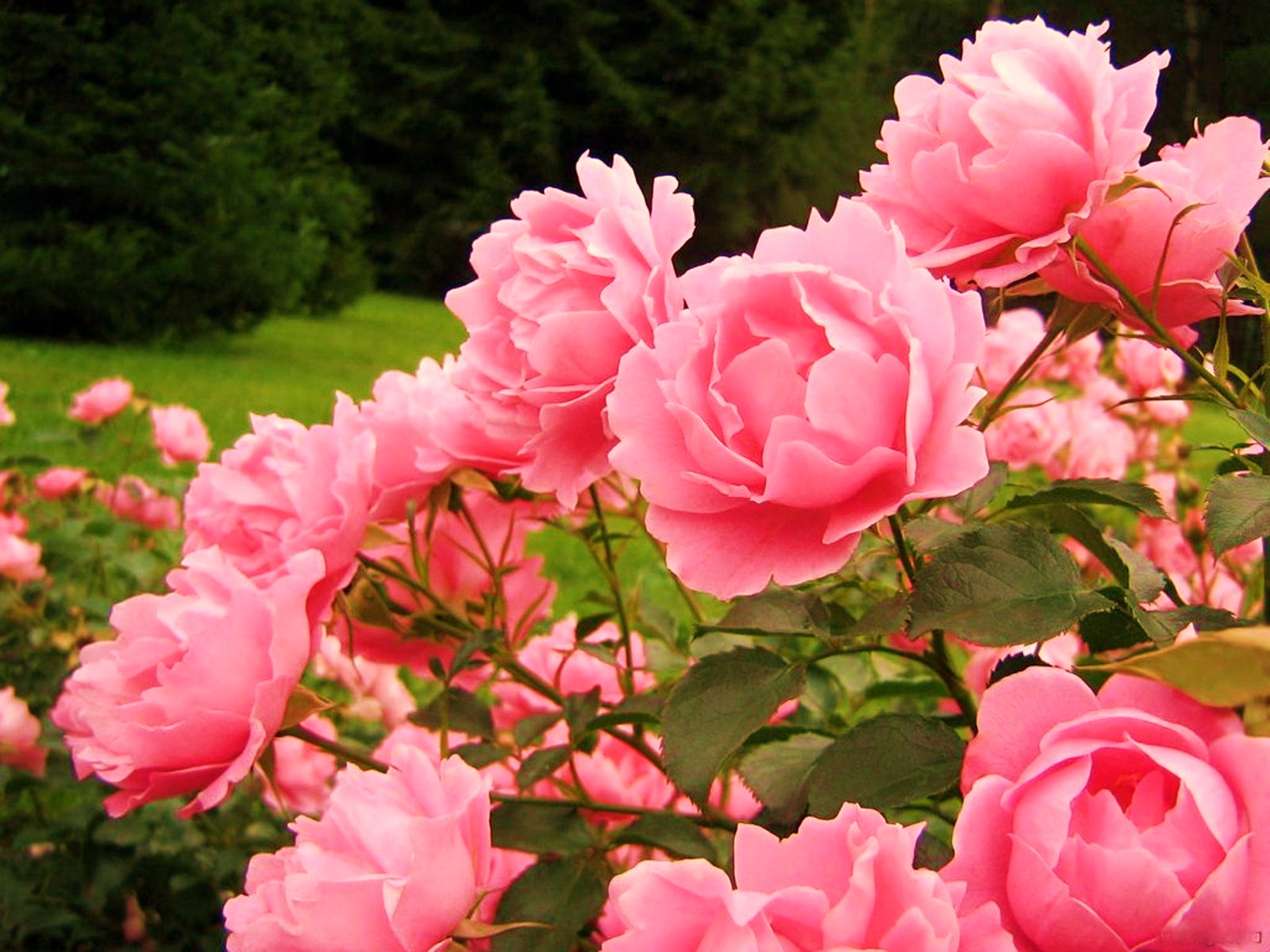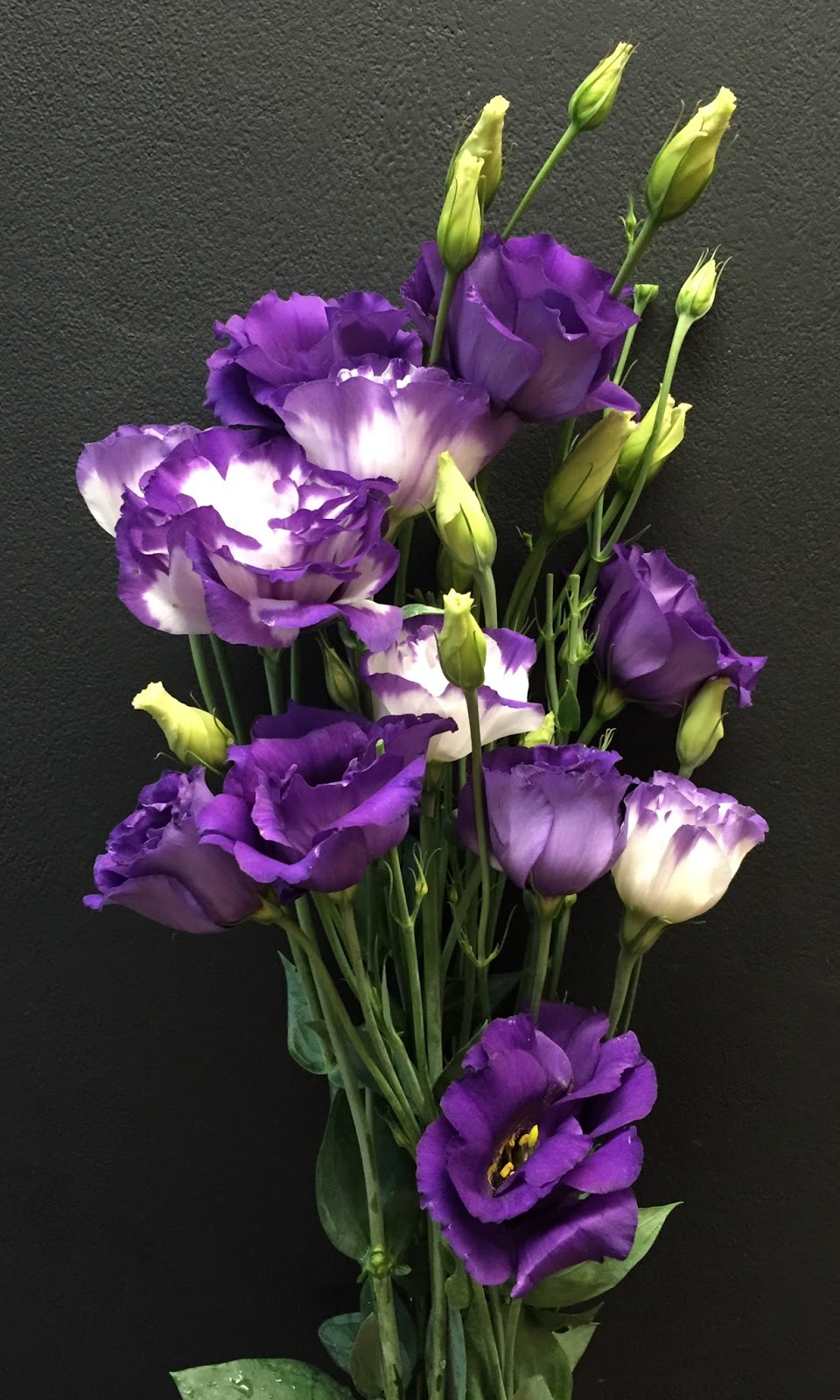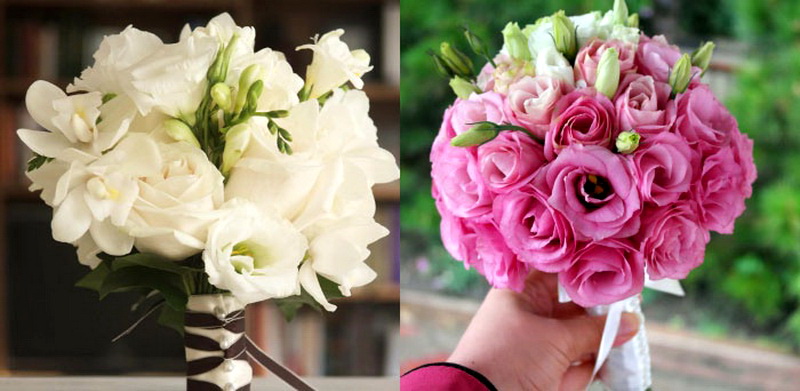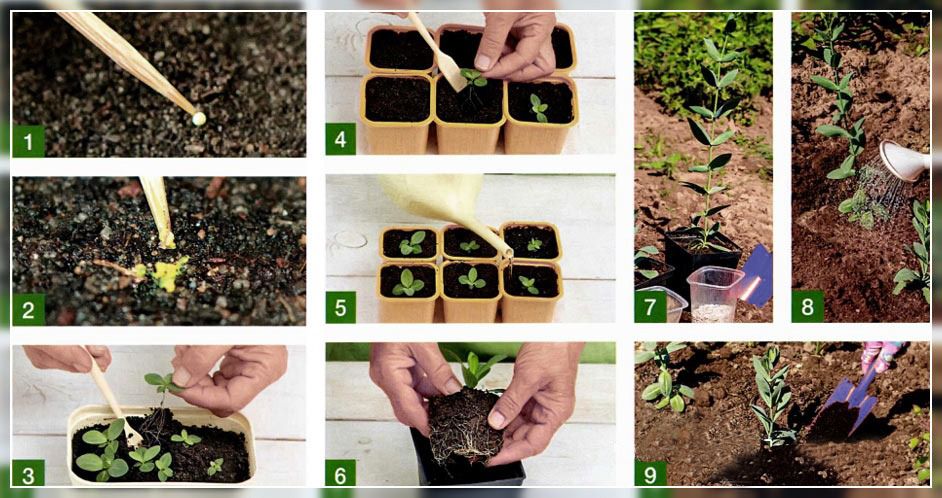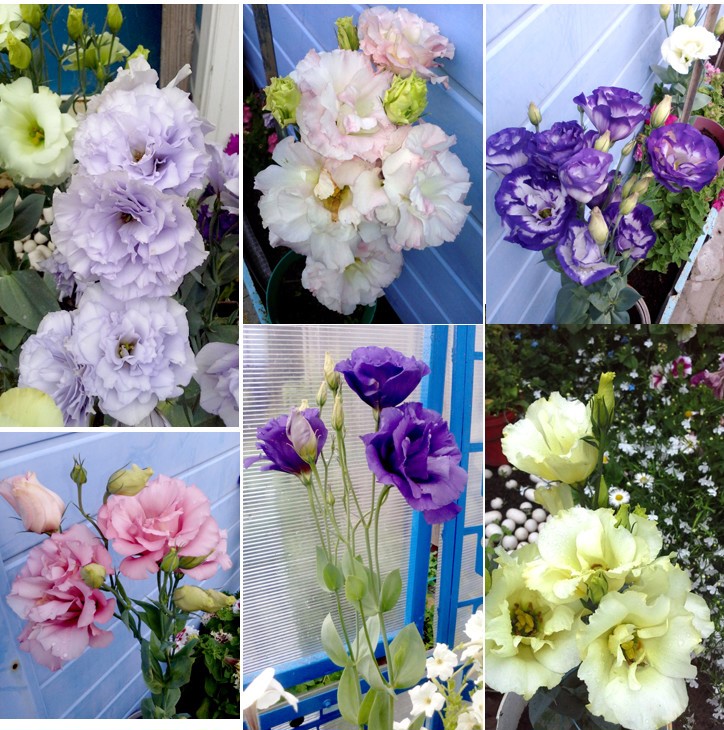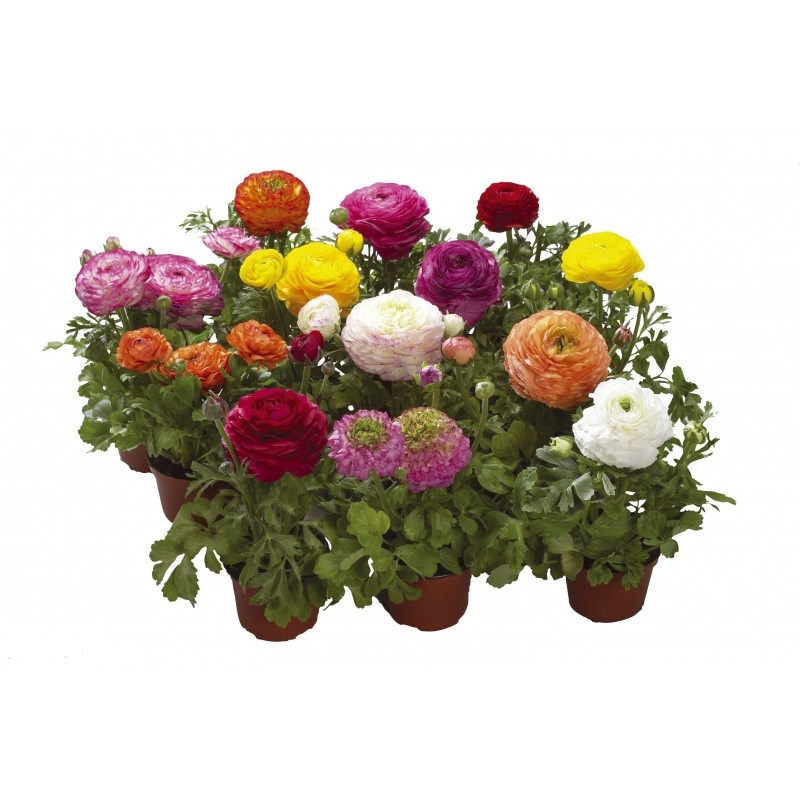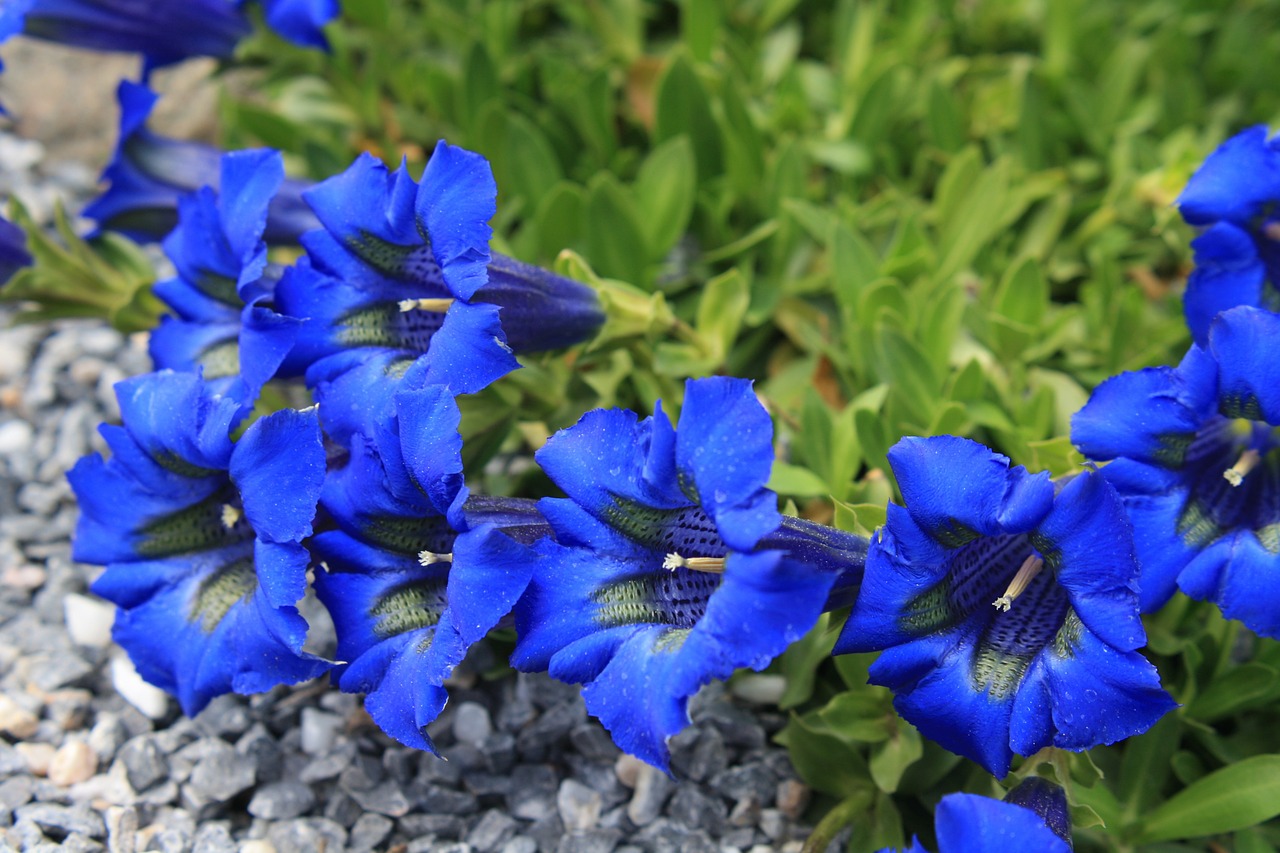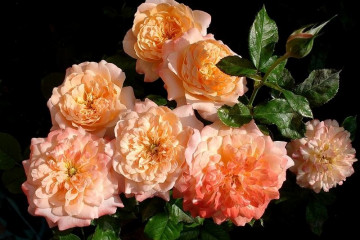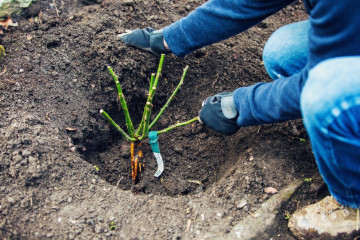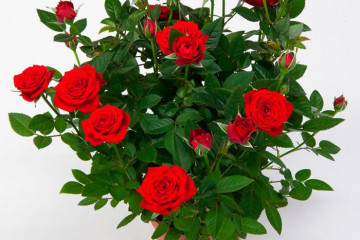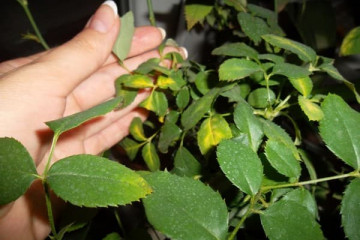Flowers are like roses, but not roses - as they are called
Content:
The rose is the queen of the garden, which breaks records in popularity, is famous for its bright large flowers, gives the suburban area elegance, and the owners - joy. Rose refers to perennials that are whimsical in care and require special growing conditions.
Not all growers can cope with the cultivation of a capricious lady. There is an alternative to a garden beauty - flowers that look like roses. Unpretentious perennial and annual flowers like roses, but not roses, as they are called, are of interest to many summer residents.
Among flowers like roses, balsam, eustoma, ranunculus, begonia, peonies are distinguished. Of the indoor doubles, hibiscus, geranium are noted.
Lisianthus and eustoma: what is the difference
The flowers of the lisianthus, or Irish rose, are called eustoma and also the Texas bell. This is the name of one flower that resembles a rose. The height of the culture is 90 cm. On a branchy bush without thorns, sometimes there are up to 30 buds blossoming at the same time. The diameter of the flowers is 14 cm. Petal color:
- blue and white;
- pink and yellow;
- blue and red.
Violet-colored varieties are especially attractive. The plant has a long growing season - more than six months.
Etymology of names
When one delves into the etymology of the word eustoma, it becomes clear that the meaning of a flower is a lovely mouth / mouth. Translated from Greek "eu" means adorable, "stoma" - mouth, mouth.
Lisianthus is translated from Greek as opened - "lysis" and "anthos" - a flower. In Latin it sounds like a bitter flower. The name has fully justified itself - when tested on the tongue, a bitter aftertaste is felt. Lisianthus and eustoma - what's the difference? She's gone. These are the names of the same flower.
Many names testify to the love and sympathy of different peoples for the plant.
Flower history
Luzianthus enters European countries from the south of the North American continent. It was first mentioned in 1806. During this time, Richard Anthony Salisbury, an English botanist, classified the culture. Eustoma becomes popular at the end of the twentieth century. It has become widespread in Mexico and America, New Zealand and Australia.
Features of Lisianthus
Gardeners love the flower variety of eustoma. It can even be two-tone: one tone changes into another. The flower is characterized by persistence. The cut plants are kept in the vase for 2 or 3 weeks. They can compete with the chrysanthemum. Eustoma is preferable for banquets and celebrations. The use of white lisianthus in wedding ceremonies in bridal bouquets is appreciated.
Lisianthus is liked for its tenderness, charm and versatility. The cultivation of a flower is carried out in a flower bed and at home, presented to beloved ones and used for a solemn decor. Eustoma occupies a special position among flower growers and gardeners.
Growing
The shrub plant is grown as an annual or perennial. In the wild, lisianthus is a biennial crop, but when cultivated in unprotected soil, it is an annual plant. The root system of a heat-loving flower freezes in frost.
The geography of year-round cultivation of lisianthus in the garden plots of the central zone of Russia is limited to +10 ° С in winter.
When breeding lisianthus, cultivation is carried out in seedlings. Sowing for seedlings is carried out in December or January to obtain flowering at the height of summer. For culture, a sunlit flower garden is prepared, which is protected from the wind, with loose soil.
Seedlings are planted in an open grant in the absence of the threat of recurrent frosts. The landing pattern is 30 × 50 cm. They regularly look after the culture:
- systematically watered with lukewarm water;
- they are fed with mineral solutions at the stage of budding and flowering.
When planting seedlings on an open bed, the eustoma blooms until autumn. When frost approaches, the flower is brought into the room, then the lisianthus will delight the hosts and guests with its beauty.
If you want to breed lisianthus, they are guided by the climate of the area. Eustoma is suitable for decorating a balcony and loggia.
If a lisianthus flower is grown at home, then after 2 years, according to gardeners, its degeneration occurs.
On the market, eustoma seeds are labeled as annuals.
Rose-like flower - ranunculus
Among the flowers similar to roses and eustomas, ranunculus is distinguished. The plant becomes popular in the 16th century, it is imported from Turkey, first to foggy Albion, then to other European countries.
After 300 years, the plant was forgotten. The growing interest of florists in the flower is now noted. The resemblance to the rose, but more modesty and less bombast, helped the ranunculus regain affection and affection.
People in the flower professions honor culture. In Italy, the flowers were called golden lawn buttons. According to legend, ranunculus are stars that Jesus turned into flowers to present to his mother.
Description
The plant is called in another way the Asian buttercup. The homeland of an unpretentious flower with brightly colored buds, which resembles a small rose, is Asia Minor, from Turkey - garden species of ranunculus.
In Persian ranunculus (semi-double and double types) - a complete resemblance of a flower to a pink rosebud. The culture grows up to 80 cm, the minimum height is 30 cm. Flowers appear on the bush, the diameter of which varies from 4 to 8 cm. Shades of buds: pinkish and milky, yellow and lilac, purple.
A heat-loving plant is planted in the last decade of May in a garden plot. Planting material - small nodules. The right time is after the spring return cold.
For ranunculus, flower beds fit with fertile soil and light shade. Fertilize the bed with rotted manure, and also make complex feed. Landing is carried out according to the scheme 15 × 25 cm.
A distinctive feature of the Asian buttercup is the long flowering period (several weeks), which falls in May-August. At this time, the flower will need to be fed with vermicompost, but the culture is picky about care. She likes the sun, but direct rays can harm the flower.
How are they looked after
The flower is supposed to be taken care of:
- watering;
- weed removal;
- release from wilted inflorescences.
Digging the tubers of the flower is carried out in the fall. After drying, they are sent to storage in a cool dry place. The main thing is to keep it until spring.
Ranunculus today
The growing popularity of the flower has had a beneficial effect on its varietal diversity. There are more than 600 types of garden buttercup, which are characterized by greater endurance than roses. A bouquet of cut ranunculus will delight you with beauty in a vase for 2 weeks.
The mysterious and magnificent flower, when opened, resembles a rose. When the ranunculus is in full bloom, it resembles a terry poppy.
A universal culture grows:
- in field;
- like a potted flower indoors;
- as a cultivated plant in the garden.
Flowers decorate a floristic composition, suitable for decorating monotonous and not only bouquets. The peculiar shape and brightness of the buds, which reach 8 cm in diameter, add charm to the flower group.
A sweet culture, which is characterized by endurance, is in demand by florists when forming a newlywed bouquet. The leg of the accessory is decorated with a crocheted napkin, satin ribbon, rhinestones. Spring flowers, which have absorbed the energy of the sun, display it with dazzling double buds.
The masters collect mono-compositions from ranunculi, and also make them a component of a floral mix, giving the bouquet warmth and charm.
How to keep the bouquet longer
In order for flowers to delight for a long time with their beauty, you will need:
- upon returning home, place the plants in a vase for a couple of hours, do not remove the packaging film;
- add a make-up for cut flowers to the water;
- cut the stems obliquely with a sharp knife by a few centimeters;
- remove leaves from the flower that are located below the liquid level in order to avoid rapid water pollution;
- it is undesirable to place ranunculus near heating devices or in direct sunlight.
Growing up in an apartment
At home, several nodules are planted simultaneously in a wide pot. They are kept in water for a day. Drainage is laid on the bottom: expanded clay, egg shells, crushed stone. Then add a layer of fertile soil, tubers, which are sprinkled with soil. It is necessary to water and monitor the temperature, which should not exceed +12 ° C. You will need to regularly moisten the ground.
When the seedlings grow up to 5-6 cm, the temperature is raised to +20 ° C. At the flowering stage, the temperature is reduced to +18 ° C. The rosette needs good illumination. Otherwise, the flowers will not have to rejoice for a long time. It is preferable to put the flowerpot on the western or southern windowsill. Ranunculus needs enhanced nutrition when it gains green mass and blooms.
If the culture fades, it needs darkening and coolness. When the leaves dry, the branches are cut off, the tubers are transferred to fresh soil and stored at t = + 15 ... + 18 ° C.
Herbaceous or herbal rose
The plant is called herbaceous rose because of the herbaceous shoot. At different stages of development, culture is like a rose, a poppy, a tulip. In the presence of terry varieties with snow-white, pink, bluish colors. The dimensions of the flower reach 8 cm, up to 20 pieces are formed on one culture.
Their dissolution begins at the same time. They do not fade for 14 days.
Habitat
Cryptobellis stemless (in Latin, Cryptobellis acaulis), or herbal rose, belongs to the Asteraceae, or Asteraceae family. Lives in the highlands of the island of Hawaii.
Plants brought in by humans have a different fate: some individuals in Hawaii lacked specific pollinators, others were non-competitive. However, some species turned out to be viable and feral. Cultures took an active part in the formation of the flora of the Hawaiian Islands.
Appearance
On the mountain slopes, with an abundance of sunshine, winds blow all year round and it is quite cool at night, an amazing culture grows there. It forms an elastic rosette of hairy green-silvery sheets with a diameter of 15 cm. The elongated root penetrates deep into rocky crevices.
A chamomile inflorescence is formed among the rosettes, which is surrounded by a number of lilac petals (reed flowers). They sit in the middle of the outlet among the leaves. Wide sheets have finely serrated edges.
For its appearance, the culture is called herbal rose.The meaning of the word cryptobellis is a hidden daisy. A light-loving perennial is content with a minimum of humus.
The leaves rise up at night and cover the inflorescence, protecting it from the cold, and keep insect pollinators. Ripening of herbaceous rose seeds after pollination occurs a month later. The wind helps the reproduction of small achenes with hairs at the top.
Flowering period and lifespan
The flowering of young crops falls on the 3rd year of life, in cold regions - on the fifth. When Cryptobellis blooms and bears fruit, the rosette of the mother culture dies. By this time, lateral buds are formed at its base, from which new rosettes develop, and the flower does not die. Then the plant lives from 10 to 12 years.
The rose remains the queen of the flower bed, but all the listed plants that resemble it are beautiful and can take their well-deserved place in the country.
Additional Information. Excalibur is a novelty among shrub roses. The diameter of apricot flowers is 10 cm, the number of petals is 25 pcs. A tall branchy bush (up to 150 cm) blooms again. Flowers are admired from early summer to autumn, at small intervals.
Doubles will decorate the personal plot: a flower garden, a window, a terrace. Compliance with the peculiarities of cultivating luxurious flowers is appreciated. Cultures live and develop, they need love, care and proper care.
